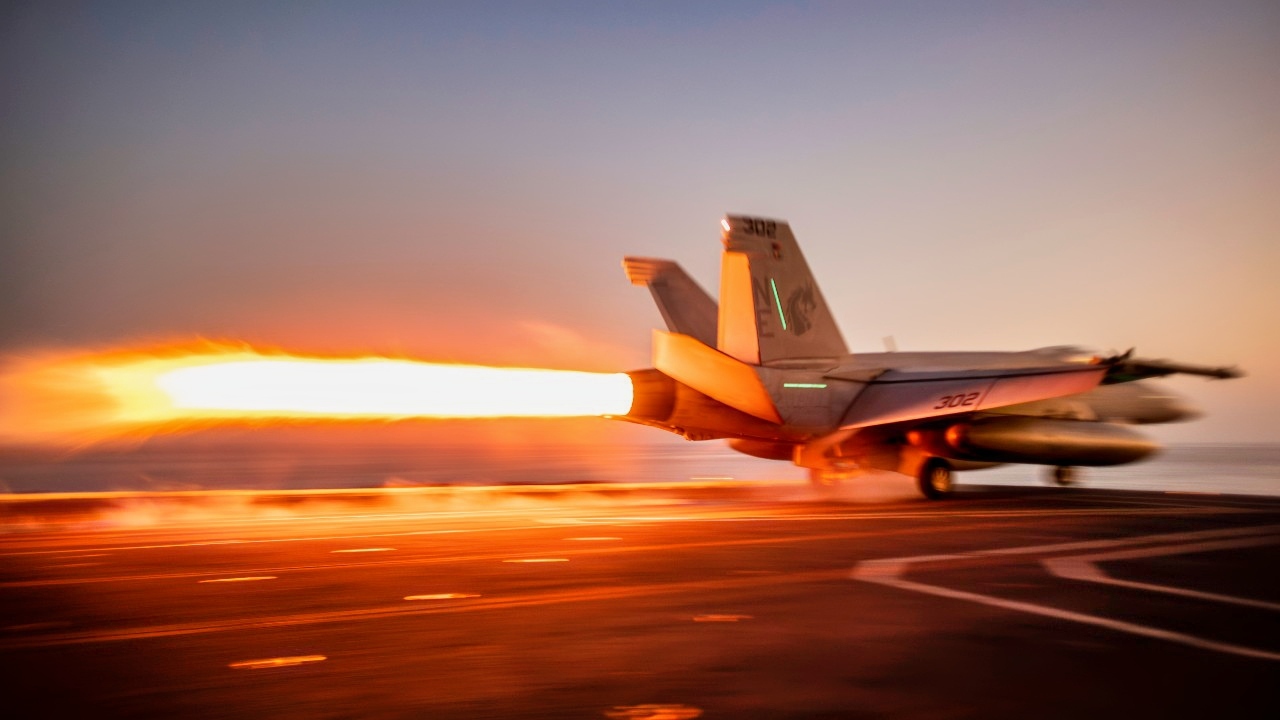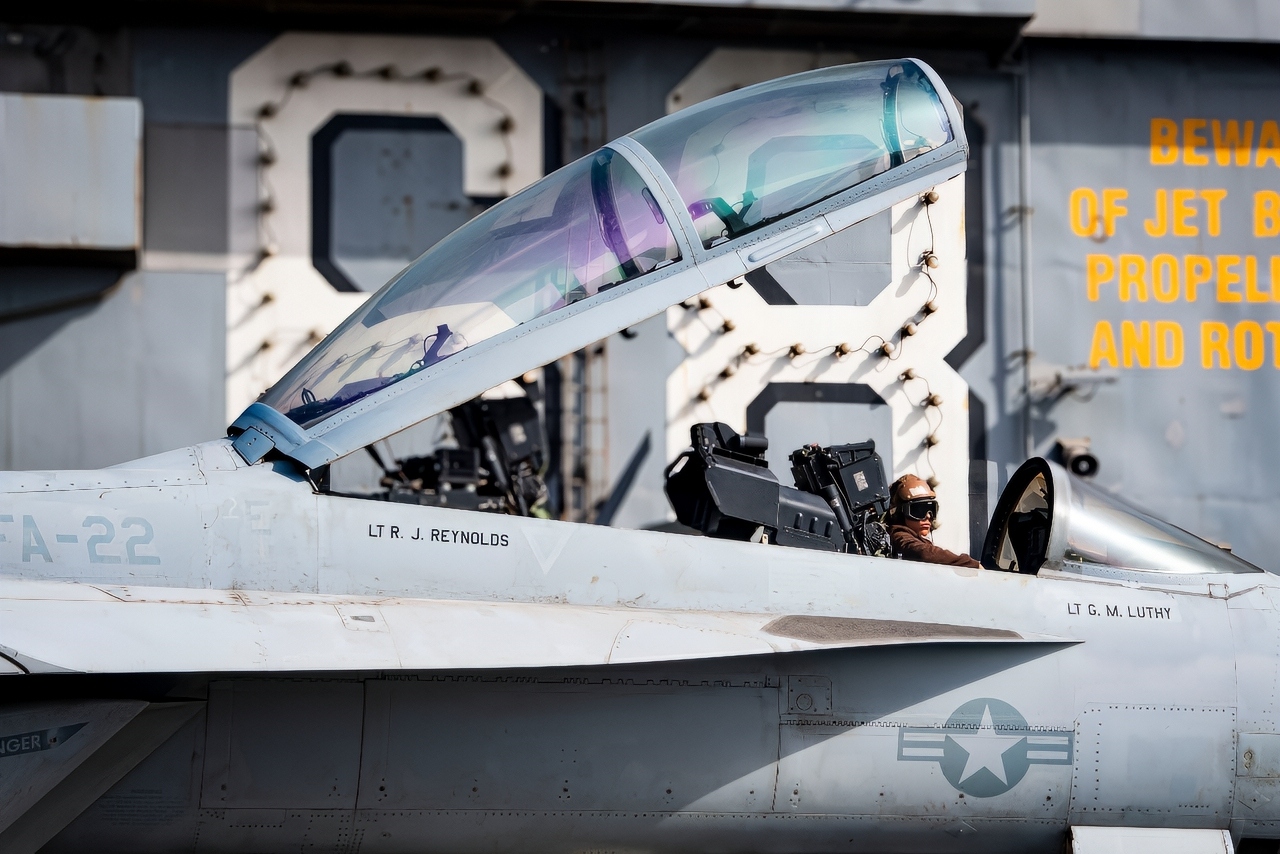Key Points and Summary – RIMPAC 2024’s SINKEX of ex-USS Tarawa marked LRASM’s coming-of-age: a carrier-launched, stealth cruise missile autonomously found and struck a 40,000-ton ship under realistic conditions.
-The test validated a long-sought Navy capability—long-range, survivable anti-ship attack from Super Hornets—after decades of relying on legacy Harpoons.

AGM-158 Extreme Range LRASM. Image Credit: Industry Handout.
-LRASM’s passive targeting, low-observable shaping, and 1,000-lb penetrator warhead offer a credible way to hit high-value surface targets through modern air defenses, even without GPS.
-As China fields larger, better-defended fleets, and the U.S. moves toward F/A-XX and broader LRASM buys, Tarawa’s sinking showcased the allied kill chain and foreshadowed an era of distributed, AI-enabled maritime strike.
Why the USS Tarawa’s Sinking Matters
When the decommissioned USS Tarawa was sunk by friendly aircraft during an exercise on July 19, 2024, the bigger story didn’t get quite the amount of press one might have expected. The bigger story was that an F/A-18F Super Hornet had launched a stealthy munition, the Long-Range Anti-Ship Missile (LRASM), to sink it.
The U.S. Navy’s official announcement confirmed the “sinking of the ex-Tarawa included the employment of a Long-Range Anti-Ship Missile (LRASM) from a U.S. Navy F/A-18F Super Hornet.”
“As a precise, stealthy, and survivable cruise missile, LRASM provides multi-service, multi-platform, and multi-mission capabilities for offensive anti-surface warfare. Currently, LRASMs are deployed from U.S. Navy F/A-18 and U.S. Air Force B-1B aircraft,” the statement added.

250429-N-FS097-1154 U.S. CENTRAL COMMAND AREA OF RESPONSIBILITY (April 28, 2025) An F/A-18E Super Hornet, attached to Strike Fighter Squadron (VFA) 192, launches from the flight deck of the Nimitz-class aircraft carrier USS Carl Vinson (CVN 70) in the U.S. Central Command area of responsibility. (Official U.S. Navy photo)

Members of the US Navy F/A-18F Super Hornet Demo Team performs a maneuver at the Wings Over South Texas Air Show. This year’s air show marks the first return of Wings Over South Texas to Naval Air Station Corpus Christi since 2019.
It was a small note in a press release, but a significant moment for maritime warfare.
It was the first public, live-fire proof that the Navy’s stealth anti-ship missile works from a carrier-borne fighter.
Not only that, but it was proof that it was possible under realistic combat conditions.
The Sinking and the Striking
During the Rim of the Pacific exercise (RIMPAC) in 2024, the U.S. Navy conducted multiple live-fire sinking exercises west of Hawaii to evaluate the effectiveness of combined maritime strike capabilities with allied forces.
Among the targets was the former USS Tarawa, a 40,000-ton amphibious assault ship that was decommissioned in 2009 after serving for three decades.
On July 19, 2024, the Navy confirmed that the Tarawa was sunk in water roughly 15,000 feet deep, more than 50 nautical miles from the coast of Kauai.
The operation involved aircraft, ships, and ground-based assets from several partner nations, but the most notable among them was the U.S. Navy’s F/A-18F Super Hornet, which launched an AGM-158C LRASM—a stealth cruise missile designed to penetrate advanced air defenses and autonomously locate maritime targets.
After launch, the LRASM flew in a pre-programmed direction at a low altitude over open ocean, relying on onboard sensors and electronic support systems to detect, classify, and home in on the target ship without any external guidance.
Once within range, the missile then executed a high-speed “sea-skimming” attack and struck the Tarawa’s port side. The missile breached the hull and caused rapid flooding, and within hours, the ship began to sink.

U.S. CENTRAL COMMAND AREA OF RESPONSIBILITY (July 22, 2025) An F/A-18F Super Hornet, attached to Strike Fighter Squadron (VFA) 22, taxis across the flight deck of the Nimitz-class aircraft carrier USS Nimitz (CVN 68) in the U.S. Central Command area of responsibility. (Official U.S. Navy photo)
The exercise was designed to provide realistic kill-chain data – the information collected at each stage of the attack relevant to target acquisition, missile performance, and more. Each target was fitted with sensors to record the structural response and blast impact.
The sinking of the Tarawa, therefore, served as proof that the LRASM is as lethal as it needs to be, and as a test of how the U.S. and its partner forces can coordinate long-range precision strikes at sea.
The LRASM is a derivative of the Joint Air-to-Surface Standoff Missile – Extended Range (JASSM-ER) developed by DARPA and fielded by Lockheed Martin.
The missile carries a 1,000 lb penetrating warhead, is shaped to evade radar, is fitted with infrared sensors, and uses onboard artificial intelligence to autonomously navigate and prioritize high-value targets – and it is that latter feature that is so remarkable. Just a few years ago, artificial intelligence was nowhere near as capable as it is today, even in a military setting.
Now, it is informing missile strikes—at least, in test environments.
Why It Mattered for the U.S. Navy
The RIMPAC sinking of the Tarawa was an operational validation of a capability that the U.S. Navy has needed for many years.
The LRASM fills what the Navy has called an offensive anti-surface warfare air-launch capability gap, giving carrier-based aircraft a long-range strike option against advanced naval threats.
Until the LRASM’s arrival, the Navy had primarily relied on the Harpoon Block 1C, a missile first introduced in the 1980s that has become increasingly obsolete against modern electronic warfare and missile-defense systems.
The LRASM, by contrast, can be launched from F/A-18 Super Hornets or B-1B Lancers and navigate autonomously even in areas where GPS is not usable.
Combined with its onboard artificial intelligence and passive sensors, the missile is now an ideal option for U.S. aircrews looking to engage the likes of China’s Type 055 destroyers, or even aircraft carriers, from well beyond Beijing’s anti-access/area-denial (A2/AD) zone, which is enforced by long-range radar and surface-to-air missiles.
China’s rapid naval expansion is another reason the sinking of the Tarawa is relevant.
The sea trials of the Type 003 Fujian carrier and new Type 052D destroyers were underway at the time of the LRASM strike in 2024.
The exercise, involving 29 nations and 40 ships, showcased allied precision-strike coordination and proved that a new form of autonomous warfare was finally possible.
And with the winning design for the F/A-XX expected imminently, and expanded LRASM production now underway, the Tarawa strike previewed what we could expect from maritime warfare in the very near future.

F/A-XX U.S. Navy Fighter. Image Credit: Creative Commons.
About the Author:
Jack Buckby is a British author, counter-extremism researcher, and journalist based in New York who writes frequently for National Security Journal. Reporting on the U.K., Europe, and the U.S., he works to analyze and understand left-wing and right-wing radicalization, and reports on Western governments’ approaches to the pressing issues of today. His books and research papers explore these themes and propose pragmatic solutions to our increasingly polarized society. His latest book is The Truth Teller: RFK Jr. and the Case for a Post-Partisan Presidency.
More Military
Ready, Aim, Fire! The 5 Best Battleships of All Time
The F-35 Stealth Fighter Still Haunts the U.S. Military
Does Russia Even Need a Powerhouse Navy?
The YF-118G Bird of Prey Stealth Fighter Haunts the U.S. Air Force











David R Arnold
October 9, 2025 at 9:43 pm
Surviving a missile hit by Hours allows your target to fire off weaponry that could destroy multiple aircraft and/or ships before it slips beneath the water, and with a full crew able to repair damage of your target – it might not sink at all. Who would think your missile is all that impressive. And who would think it was much of a real life test…
Brett327
October 10, 2025 at 2:04 am
How does the author even know that LRASM hit the Ex-Tarawa? This story makes several claims that are not in evidence.